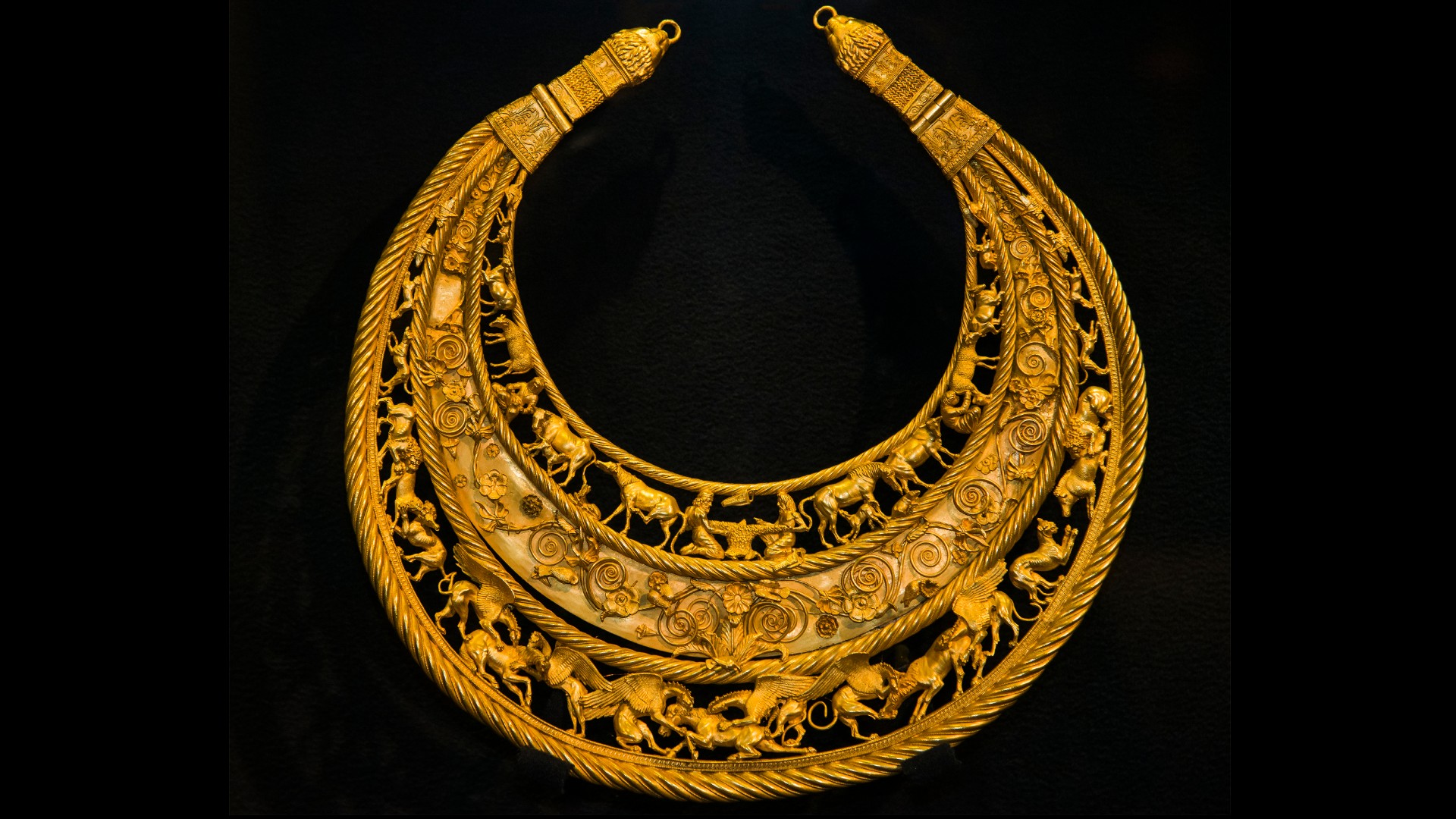Russian forces reportedly stole priceless Scythian treasures from Ukrainian museum
Some of the stolen artifacts are 2,300 years old.

Russian soldiers have reportedly stolen gold Scythian artifacts dating back about 2,300 years from the Melitopol Museum of Local History in Ukraine. Additionally, there are reports that a museum staff member is currently being held by the Russian military.
The Scythians, culturally related groups of nomadic pastoralists and formidable warriors, thrived across Eurasia between roughly 800 B.C. and A.D. 300 and crafted many beautiful artifacts out of gold.
Melitopol, located in southeastern Ukraine, has been occupied by the Russian military since March 1, according to news reports. Since the Russians started their invasion of Ukraine on Feb. 24, they have captured large swaths of territory in the eastern and southern parts of the country. However, their attempts to take the capital city of Kyiv have failed.
The Russians "have taken hold of our Scythian gold. This is one of the largest and most expensive collections in Ukraine, and today we don't know where they took it…," said Ivan Fedorov, the mayor of Melitopol during a national telethon, according to the news site Ukrinform. Federov was forced out as mayor by the Russian military after they took over the entire city on March 1.
Related: 2,500-year-old burial mound found in Siberia's 'Valley of the Kings'

Leila Ibrahimova, the director of the museum, confirmed the theft in an interview with the New York Times. The artifacts stolen included at least 198 gold items, including ornaments in the form of flowers and gold plates, Ibrahimova told The New York Times, noting that some of the gold items were made by ancient Greeks and were sent, either as gifts or through trade, to the Scythians. Additionally, the Russian troops took 300-year-old silver coins as well as "old" weapons and medals.
Ibrahimova said that she was held captive before the Russians released her in mid-March. Additionally, another museum employee named Galina Andriivna Kucher was abducted on April 30 after she refused to give information about the rest of the museum's Sycthian collection, which the curators had hidden, Eskender Bariiev, a Ukrainian activist, wrote on his Facebook page.
Sign up for the Live Science daily newsletter now
Get the world’s most fascinating discoveries delivered straight to your inbox.
Live Science has not been able to reach Ibrahimova or confirm the abduction of Kucher. Archaeologists that Live Science reached said that the Melitopol area was an important hub for Scythian activity around 2,000 years ago.
"Melitopol is well known in archaeology thanks to a Scythian era burial ground nearby," Caspar Meyer, a professor at the Bard Graduate Center in New York City, a research institute that is dedicated to the study of material culture, told Live Science in an email. "One of the mounded tombs [near Melitopol] excavated in 1954 by the archaeologist A. I. Terenozhkin contained a rich subterranean tomb with thousands of artifacts in gold and other metals, which are mostly in the Kiev museum."
Other archaeologists confirmed that many of the finest Scythian artifacts found in the Melitopol area are in the Kiev Museum. "All the best of the Scythian gold from Ukraine, other than that taken to St. Petersburg in the nineteenth century, is collected together in the Kiev Museum of Historical Treasures [of Ukraine], where I assume it is in safe hands," Barry Cunliffe, an emeritus professor of European archaeology at the University of Oxford, told Live Science in an email.
Cunliffe emphasized that many important Scythian burial sites lie in conflict areas within Ukraine and are in danger of being looted.
What will happen to the stolen artifacts?
It's unclear what the Russian soldiers will do with the stolen artifacts. It's possible that they could be sold or they could be displayed in institutions in Russia or territories that they occupy, Sam Hardy, an expert in the trafficking of cultural properties, told Live Science in an email.
"There are Ukrainian archaeologists, museologists and art historians who are doing as much as humanly possible to track what is happening" said Hardy, noting that the demands of the war (many heritage professionals are performing military duties) and lack of funding make it difficult to track looted antiquities.
Originally published on Live Science.

Owen Jarus is a regular contributor to Live Science who writes about archaeology and humans' past. He has also written for The Independent (UK), The Canadian Press (CP) and The Associated Press (AP), among others. Owen has a bachelor of arts degree from the University of Toronto and a journalism degree from Ryerson University.










